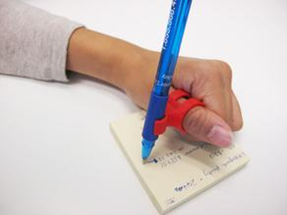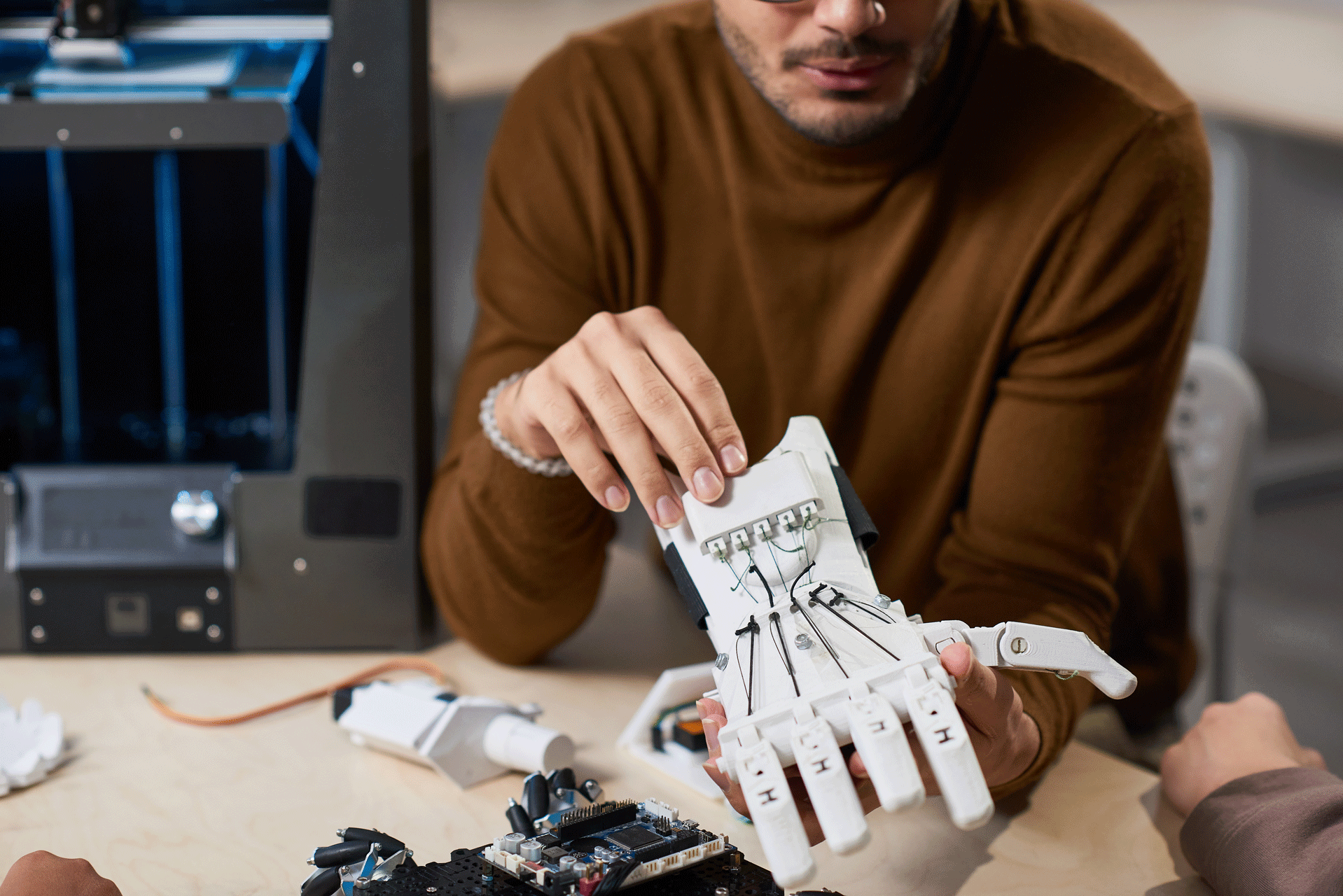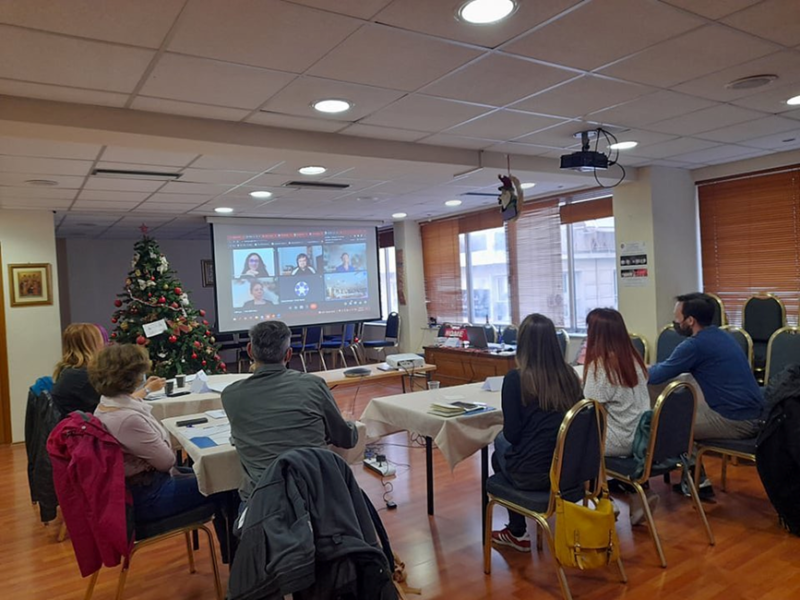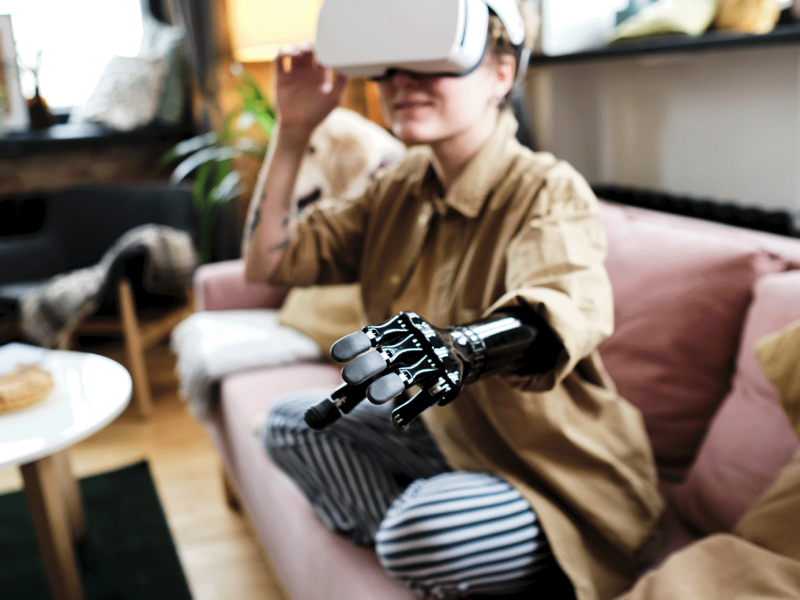Author: Doru Cantemir, Ph.D.
Ludor Engineering – www.ludoreng.com
This article belongs to a series of texts within the project “Inclusive Education: Ensuring Accessibility of Non-Vocational Education for Adults with Disabilities”.
The aim of this text is to present the revolutionary technology of 3D printing and some of its applications for supporting the needs of persons with disabilities.
3D printing (3DP), also known as Additive Manufacturing, is an umbrella term for a set of technologies that can build 3D physical objects from a digital file by adding successive layers of material until the object is created. As shown in the picture, these layers can be seen as a thinly sliced cross-section of the object.

a) schematics

Figure 1 The layers of a 3D printed object. Source: Ludor Engineering, www.ludoreng.com
Nowadays, there are many 3DP technologies, using various materials (plastics, metals, concrete, chocolate, etc.) in several forms (liquid, solid, powder).
3DP can support the needs of persons with disabilities in many ways. It enables to easily create objects adapted to disability and personalized, such as prostheses, orthoses, customized wheelchairs, etc. Some examples include 3D printed prosthetic developed by Open Bionics or e-NABLE community, the tactile and interactive 3D printed map Virtuoz created by FeelObject for persons with visual disabilities, the ThisAble 3D printed furniture extensions designed by IKEA to make everyday life easier for people with disabilities.
3DP is a very useful tool because it offers creativity freedom for designers and inventors, production affordability for companies and hobbyists as well as many ways to address various challenges related with disability. One brilliant example is the “Touching the Prado” exhibition made by Madrid’s Prado that includes 3D printed replicas of famous paintings that visually impaired people can touch in order to capture their beauty.
3DP revolutionized the hearing aids market, allowing much faster production, enabling affordable customization, providing high accuracy as well as cutting costs and material waste.
In the last years, 3DP become accessible to the masses, thanks to technology developments and prices drop. Nowadays, many persons can have their own 3D printer or can easily access 3D printing services from makerspaces or 3DP providers. This led to the democratization of manufacturing bringing unprecedented levels of creativity to a number of fields that used to be cost prohibitive.
Countless 3D printing files are now freely available on online repositories such as thingiverse.com. Among these, there are also objects than can improve the life of many people with disabilities, such as prosthetic arms, simple Assistive Technology devices, various adapters, handles and supports that increase accessibility, objects with embossed Braille text and other artefacts designed for visual impaired people, etc.
Figure 2 shows a 3D printed simple Assistive Technology device. It snaps onto a finger digit that holds a writing utensil and helps persons with gripping issues and still have some movement in their wrist or hand.

Mastering 3DP is not very complicated but some study is needed in order to acquire the necessary skills and knowledge. Luckily, there are many educational resources freely available thanks to Erasmus+ programme of the European Union. For example, the project “4.0 didactic approaches in duty of developing ANDragog’s COMpetences (4.0 ANDCOM)” includes a training module and three videos designed to raise awareness and the ability to use 3DP in Adult Education (https://andcom.erasmus.site/ ). For those wanting to learn how to design and 3D print simple objects there are also the educational resources developed by the project “3DP TEACHER – implementation of 3D Printing in future education” (https://3dp-teacher.erasmus.site/ ).
3D printing technology enables the creation of useful, affordable and ingenious items that can greatly help the people with disabilities around the world. In the same time, can be used by many individuals in order to make better their life or the life of others.



